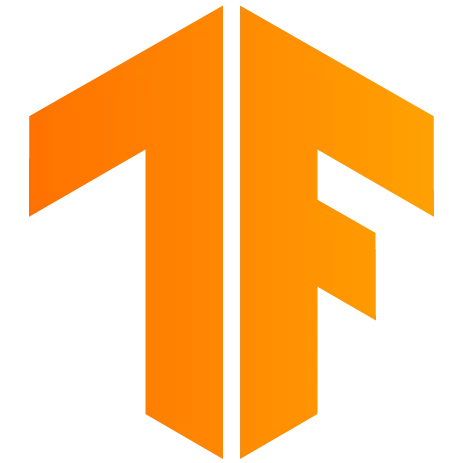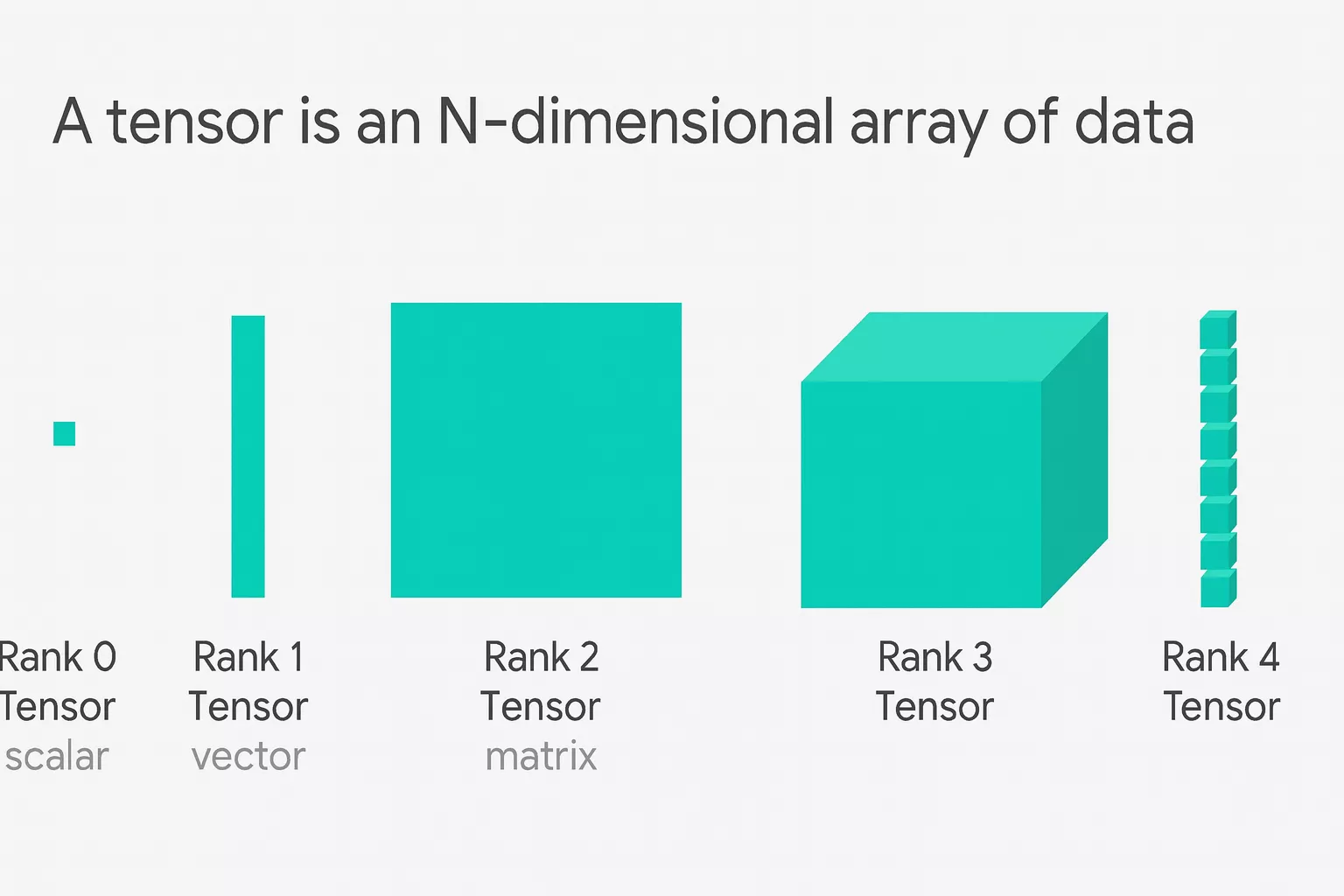This TensorFlow intro will help you get a glimpse of what TensorFlow is used for in machine learning, and whether or not you are ready to include it in your learning journey.
This framework offers scalability and ability to handle complex deep learning projects as an alternative to brain.js. Here, we the will learn how will get a shorter version of TensorFlow introduction with a complete guide on how to start with this library.
What Is TensorFlow?
TensorFlow is an open-source machine learning framework used to perform various deep learning tasks, making use of deep neural networks and inference. Programmers use this library to create various machine learning applications and tools. It basically does everything from building, training, to deploying machine learning models across various systems and production environments. This tensorflow intro will help you learn how to manage complex machine learning and neural networks.

- This Tensor Flow library is an open source platform and easily works on different platforms, making it scalable.
- TensorFlow is used for various Machine learning algorithms and data visualization tasks.
- It is keras friendly suitable for training data models
- However, TensorFlow can sometimes be consistent and complex for beginners.
- It reduces memory usage by utilising GPUs and CPU systems.
- TensorFlow makes use of TPU for easy cloud integration and faster deployment.
What Is a Tensor (N-Dimensional Array)?
A tensor is a mathematical array of objects that is used to represent data in multiple dimensions. There are different levels of tensors, including 0-D tensors, 1-D tensors, 2-D tensors, and more. It can go up to an n-dimensional array capable of storing numerical data in a structured and multidimensional form.
For example, check the visual representation of a 2-D Tensor having a row and a column.
| [
[1, 2, 3], [4, 5, 6] ] |
Tensors are easy to scale and store data efficiently, making them ideal to run on GPUs and TPUs. Tensors are the core data structure where every element, like input, output, and gradient, is represented as a tensor.
| Quick Fact: TensorFlow, due to its scalability and ability to handle large deep learning tasks, is popular. |
TensorFlow Intro: The History of TensorFlow
TensorFlow was developed by Google Brain in 2015; you might know it as brain.js, suitable for lightweight machine learning tasks. The team decided to build a framework capable of handling large-scale machine learning tasks.
The project began as an internal tool called DistBelief, which Google used to build and deploy neural networks across its massive infrastructure. Although DistBelief was effective, it had many limitations. Google experts then started working on a user-friendly system, which led to the creation of TensorFlow in November 2015. It was released as an open source project for programmers worldwide.

This framework quickly gained popularity because it allowed developers and researchers to build machine learning models using computational graphs and execute them efficiently on different devices, including CPUs, GPUs, and later TPUs. With time, TensorFlow 2.0 covered all the gaps and inefficiencies of the earlier version, making it a more intuitive API and better integration with Keras.
Today, this model is one of the most widely used deep learning frameworks in the world, powering applications in computer vision, natural language processing, recommendation systems, robotics, and more.
Read More: Top 30 Deep Learning Interview Questions for Data Scientists 2025
Why Should I Be Using TensorFlow?
If you are learning artificial intelligence or machine learning, or a person who wants to upskill themselves in the field of advanced intelligence, then TensorFlow is the stair that will lead you to the world of advanced computing, deep learning, and neural networks.
- Build ML Models
- Train them efficiently
- Visualize performance
- Deploy on any device, including web
- Scale training across TPUs and GPUs.
- Use pre-trained models
- You can use this model to solve problems in vision, recommendations, predictions, speech, NLP, and more.
This library can help you with any of your lightweight to complex machine learning projects. Check some use cases that will give you an idea of why you should be checking on this TensorFlow intro and use this library ahead.
- TensorFlow can build and train machine learning models, including deep neural networks, transformers, autoencoders, and almost all types of ML Models.
- It can be used to handle complex numerical computation, like operations on GPUs, TPUs, CPUs, and more.
- This model works with n-dimensional arrays, also known as tensors, which gives you the flexibility to represent any type of data with easy integrations on GPUs and other complex models.
- With TensorFlow, you can easily deploy models anywhere, giving you the flexibility and accessibility on different devices, including web, servers, and production environments.
- You can easily build production-ready pipelines with TensorFlow, including CI/CD integrations, model versioning, APIs, scalable deployment, and more.
- It provides easier integration with the advanced Generative AI, which can be used in GANs, diffusion models, transformer-based generative models, and more.
Architecture of TensorFlow Library
Let us check some of the core components of the TensorFlow library below.

1. Tensors
Tensors are the basic data units, also known as n-dimensional arrays in TensorFlow. Tensors contain multi-dimensional arrays used for storing and manipulating data during model training and inference. Starting with the 0-dimensional array, tensors can take various forms:
- 0-D tensor (Scalar): It consists of a single number
- 1-D tensor (Vector): This list contains numbers
- 2-D tensor (Matrix): It contains only rows × columns
- 3-D or higher tensors: It is used for complex data like images, audio, and batches of sequences
Read More: What is Perceptron | The Foundation of Artificial Neural Network [Latest 2025]
2. Graph
This model including tensor is used for computational graph represents the entire model as a sequence of operations connected using tensors. Here, in this graph, each node performs a specific operation, such as:
- Matrix multiplication
- Addition
- Activation functions
- Convolution
- Pooling
Each edge in the graph represents a tensor flowing between operations.
This graph-based execution enables TensorFlow to optimize performance, run operations in parallel, and deploy models across different devices (CPU, GPU, and TPU), and much more.
3. Session
A session is responsible for executing the computational graph in this tensor model and evaluating the tensors based on various inputs and outputs. It allocates different resources and runs the defined operations, and returns the results of tensor evaluations.
The three key operations performed by Tensor are model training, inference, and graph execution.
- Model training: It is used for calculating loss and updating weights
- Model inference: It focuses on generating predictions
- Graph execution: This phase is used for running complex chains of tensor operations.
How to Set and Load a Dataset With TensorFlow?
Tensor Flow is supported on various devices having 64-bit systems. Check the following.
- Python 3.9-3.12
- macOS 10.12.6 (Sierra) or later
- Windows 7 or later
- Ubuntu 16.04 or later
- WSL2 via Windows 10 or higher, including GPUs.
Set up the TensorFlow
| import tensorflow as tf
print (“TensorFlow version: “, tf.__version__) |
Loading Dataset
| mnist = tf.keras.datasets.mnist
(x_train, y_train), (x_test, y_test) = mnist.load_data() x_train, x_test = x_train / 255.0, x_test / 255.0 |
Building a Machine Learning Model
| model = tf.keras.models.Sequential([
tf.keras.layers.Flatten(input_shape=(28, 28)), tf.keras.layers.Dense(128, activation=’relu’), tf.keras.layers.Dropout(0.2), tf.keras.layers.Dense(10) ]) |
Going ahead, you can train and evaluate this model by passing through fit, evaluation, and then creating a probability model. The probability model chooses the simple already trained models instead of changing weights every time.
Steps to Use Tensor Flow For Machine Learning Models
Check the following steps used to build a machine learning model using the Tensor Flow library.
- Training the Model: The model is first trained on a cloud or a simple local platform. It is advised to evaluate and validate the model to ensure higher accuracy before going for deployment.
- Convert the Model: The model is then trained and converted into Tensor Flow Lite i,e. .tflite format. It prepared the model for resource-constrained edge environments. It supports different formats like Keras and Concrete functions.
- Optimise the Model: You have to apply various optimization techniques to set the model to its appropriate form, reducing size, inference speed, weight clustering, and more. This is important to ensure that the model runs efficiently on different devices.
- Deploy Model: The model is then deployed to devices like iOS, Android, Linux, and more. It ensures compatibility with the Tensor Flow runtime for the platform.
Read more: Top 60+ Data science Interview Questions and Answer
Example of Building a Simple TensorFlow Model
We are loading the Fashion MNIST dataset by preprocessing the image and building a simple neural network here. We will be using TensorFlow’s sequential API and train for 5 epochs.
| from tensorflow.keras.datasets import fashion_mnist
from tensorflow.keras.models import Sequential from tensorflow.keras.layers import Dense import tensorflow as tf # Load Dataset (train_images, train_labels), (test_images, test_labels) = fashion_mnist.load_data() # Preprocess the data: Flatten and normalize train_images = train_images.reshape((60000, 28 * 28)).astype(“float32”) / 255 test_images = test_images.reshape((10000, 28 * 28)).astype(“float32”) / 255 # Build the Model model = Sequential([ Dense(128, activation=”relu”, input_shape=(28 * 28,)), Dense(10, activation=”softmax”) ]) # Compile the Model model.compile(optimizer=”adam”, loss=”sparse_categorical_crossentropy”, metrics=[“accuracy”]) # Train the Model model.fit(train_images, train_labels, epochs=5) # Evaluate the Model test_loss, test_acc = model.evaluate(test_images, test_labels) print(f”Test Accuracy: {test_acc}”) |
Output
| Epoch 1/5
1875/1875 ━━━━━━━━━━━━━━━━━━━━ 5s 2ms/step – loss: 0.52 – accuracy: 0.82 Epoch 2/5 1875/1875 ━━━━━━━━━━━━━━━━━━━━ 4s 2ms/step – loss: 0.39 – accuracy: 0.86 Epoch 3/5 1875/1875 ━━━━━━━━━━━━━━━━━━━━ 4s 2ms/step – loss: 0.35 – accuracy: 0.88 Epoch 4/5 1875/1875 ━━━━━━━━━━━━━━━━━━━━ 4s 2ms/step – loss: 0.32 – accuracy: 0.89 Epoch 5/5 1875/1875 ━━━━━━━━━━━━━━━━━━━━ 4s 2ms/step – loss: 0.30 – accuracy: 0.90 |
Here, we are loading images from clothing categories and then pre-processing them to build a simple neural network using an Adam optimizer. For training, we are running through the dataset 5 times.
TensorFlow Intro FAQs
Q1. What is TensorFlow?
Ans: TensorFlow is an open-source library used for executing machine learning and deep learning tasks.
Q2. Is TensorFlow only used in Python?
Ans: TensorFlow is a library in Python; however, it is not bound to Python. It was created by Google and can be used with different programming languages like C++, JavaScript, Java, Python, and more.
Q3. Does ChatGPT use TensorFlow?
Ans: No, ChatGPT does not currently make use of TensorFlow and is trained and deployed using the PyTorch library.
Q4. Is TensorFlow still used in 2025?
Ans: TensorFlow is still used in 2025, particularly in advanced artificial intelligence for training machine learning models and various other complex operations.

